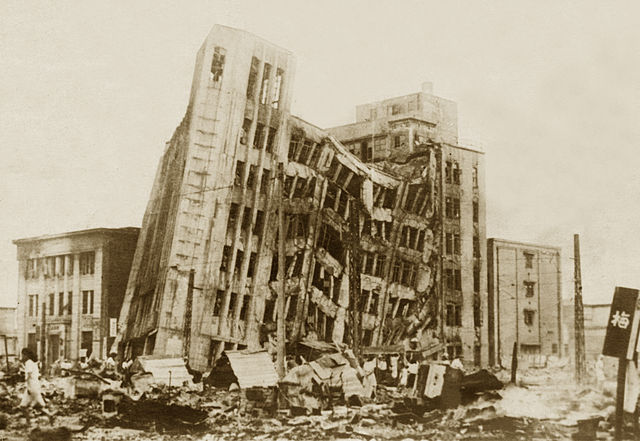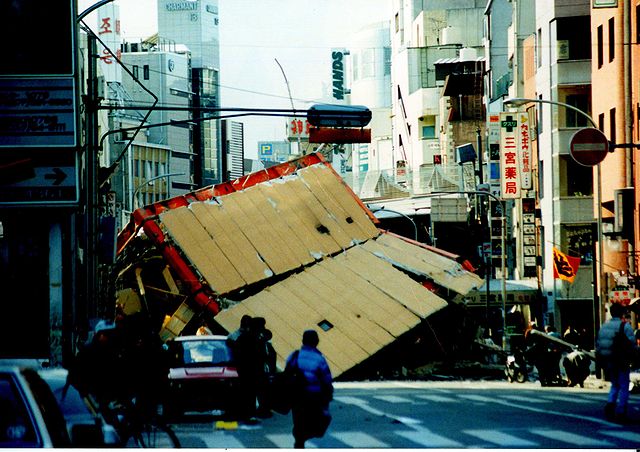| Noticias |
Earthquakes
por Raphael
20% of the world’s earthquakes that exceeds magnitude six occur in Japan. In the past 10 years, Japan has experienced more than 200 of these earthquakes. Ancient Japanese people believed that earthquakes were caused by a giant catfish moving underneath the earth’s surface. However, over the years of studying, it has been determined that a significant number of earthquakes is a result of complications of plate tectonics in Japan. In the Tokai region, three tectonic plates converge causing major earthquakes in 100 to 150 year-cycles. Through years of experience, Japanese people have developed ingenious engineering for disaster reduction measures and be ready for the moment when they strike.
Since the Great Kanto earthquake in 1923, where over 100,000 people were found missing or dead, September 1st is set as disaster prevention day, where schools conduct earthquake evacuation drill. An announcement is made for students, warning that an earthquake has occurred. Students are instructed to hide under their desks to protect themselves from falling objects. As soon as another announcement is made informing that the earthquake stopped, students are guided to evacuate to the outside of the building. Japanese students always have protective hoods ready under their chairs. In National Diet Building in Tokyo, protective hoods are also placed under each elected representatives’ chair in case of an earthquake in order to protect them from shattered glasses falling from the stained-glass.

You can also find various preventive ideas in most houses in Japan, such as braces to secure furniture, straps to tie a TV to the wall, and a preparation of a knapsack with all the must-have items in case of earthquake. Thus, disaster reduction measures are deeply ingrained in everyday life.
Further, various architectural techniques were developed to prevent buildings from collapsing. In 1662, an earthquake hit Kyoto and destroyed most buildings. However, some wooden buildings survived this severe earthquake. One of them was Nishi Hongwanji. In 1998, the building restoration of Nishi Hongwanji revealed a secret of the structure deformation. It turned out that its deformation capacity due to flexibility of the wood and the arrangement of the number of columns supporting the roof has enabled the building to avoid substantial damage. Thus, Japan’s traditional methods have remained cornerstone of their inventive architectural designs.
A giant tidal wave, known as tsunami, can be generated by an earthquake. In 1854, an earthquake over magnitude eight hit Wakayama prefecture triggering a major tsunami. Goryo Hamaguchi saw a cloud in the sky after this major earthquake and predicted something was about to happen. He reached a high ground and set fire to the fields leading to the shrine in order to catch village people’s attention in the darkness. Although the village was washed out by Tsunami, he successfully evacuated most of the villagers. In an effort to protect his village again, Hamaguchi decided to invest his own money into building a sea wall. With 1,300 sea villagers’ help, a massive seawall of 900 meters long and 4.5 meters high was completed four years after the earthquake. This was the first sea wall in the world built to protect against tsunamis. About 100 years later, in 1946, the Showa Nankai earthquake hit the village. This very sea wall ended up saving the village from destruction. Today, this small fishing village has grown to be a city of over 8,000 people.
The Japanese government has also been engaged in helping other countries learn how to cope with earthquake disasters. They created a book about tsunamis and translated it into nine different Asian languages. However, in severe disasters, government assistance alone may not be sufficient and require volunteer activities.

Hundreds of thousands of volunteers supported relief efforts at the Hanshin earthquake in 1995. The massive earthquake killed over 6,000 people. The news of this tragedy traveled the world and the volunteer spirits transcended national borders. Today, many Japanese volunteers go to China to help small villages in restoration efforts after an earthquake. One of the important aspects of volunteer work is to provide not only financial support but also emotional help. For instance, some of Japanese volunteers drive several hours to listen to disaster victims in small villages in China. They learned from volunteering after the Hanshin earthquake that listening to the victims is important during a chaotic time. Every individual victim has a voice, and anyone can help victims without special skill as crying and laughing with those affected are one of the best medicines for the psychological wounds.
Earthquakes cannot be prevented. In Japan, there are over 2,000 earthquakes per year that people can physically feel. However, since Japan has experienced frequent and devastating earthquakes, it has evolved into a nation with careful preparations and ingenious techniques to prevent and minimize severe damage caused by an earthquake. While Japan has a very low crime rate making it the safest country in the world, natural disasters make it the most dangerous.
Photo credits:
- http://en.wikipedia.org/wiki/File:Hanshin-Awaji_earthquake_1995_337.jpg
- http://en.wikipedia.org/wiki/File:Fukui_Earthquake_1948_-_damaged_building.jpg
| Aucun commentaire |


















